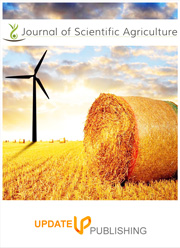Selection for yield and its component traits in interspecific recombinant inbred lines of tef
DOI:
https://doi.org/10.25081/jsa.2020.v4.6263Keywords:
Eragrostis tef, Genetic variability, Interspecific cross, Path analysisAbstract
Forty recombinant inbred lines (RILs) of interspecific cross of Eragrostis tef x E. pilosa were evaluated to study variability and interrelationships among agronomic traits using randomized complete block design. The RILs were evaluated for 17 traits. The result showed panicle length, rind penetrometer resistance of the first and the second basal internodes, 100-kernel weight, kernel weight per panicle, plant height and grain yield per plant had high estimates of genetic coefficient of variation, broad sense heritability and genetic advance. Thus, improvement of these traits could be attained through direct selection without the masking effect of the environment. The correlation study showed positive and significant (p<0.01) phenotypic and genotypic associations of grain yield per plant with days to heading and maturity, panicle length, 100-kernel weight, kernel weight per panicle, biomass yield per plant and harvest index. Genotypic path coefficient analysis revealed that panicle length, biomass yield per plant, crushing strength of the second basal internode, harvest index, days to heading and kernel weight per panicle exerted appreciable positive direct effect on grain yield per plant. These traits could, therefore, be considered as indirect selection criteria while selecting lines in order to improve grain yield of the interspecific population.



 .
.